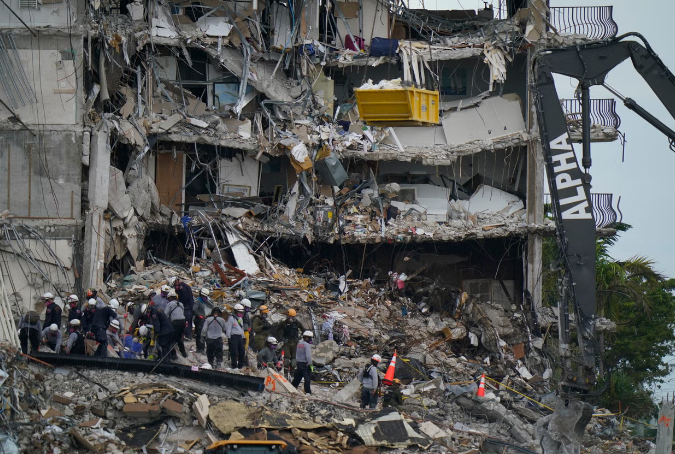Rescue teams work tirelessly as 140 remain unaccounted for following the Champlain Towers South disaste
For 17 days, Reshma Begum endured unimaginable conditions under the rubble of a collapsed garment factory in Bangladesh, and Darlene Etienne survived for 15 days in the debris of a house after an earthquake in Haiti. These extraordinary stories of resilience inspire hope that more individuals may still be found alive in the aftermath of the Champlain Towers South condo tower collapse near Miami.
As rescue efforts enter their seventh day, over 900 workers from various agencies are engaged in the search, with at least 16 confirmed dead and more than 140 individuals still unaccounted for. Surfside Mayor Charles Burkett reassured the community, stating, “No one is giving up hope here.”
He cited Begum’s case, where rescuers had lost hope until they heard her calls for help, underscoring the potential for miracles. Despite no survivors being pulled from the rubble since shortly after the collapse, experts emphasize the critical nature of the early days post-disaster for finding living individuals. Dr. Hernando Garzon, an emergency physician with extensive disaster response experience, remarked, “It’s too early to call it a body-recovery phase at this point.”
Garzon recalled the emotional moment when Etienne was rescued after being trapped for 16 days, highlighting the crucial role of faint cries in her survival. Similar miraculous rescues from past disasters include individuals who survived against all odds, often relying on limited resources such as rainwater or their own urine.
The key to finding survivors lies in identifying voids within the debris—spaces that may allow for life. However, the pancake collapse of the Champlain Towers South poses significant challenges for rescuers. Structural engineers warn that the intertwined debris could hinder access to potential pockets of air.
Long-term survivors in previous disasters have often been younger and had access to water or some form of sustenance, which is crucial in prolonged entrapment. South Florida’s warm climate may further aid survival, as victims are not exposed to harsh cold temperatures.
“There are those who have survived despite all the odds, and I have no doubt that part of it is just that will to survive that even science cannot explain,” said Dr. David Shatz, a trauma surgeon and former assistant medical director of the Miami-Dade Fire Rescue Department. He continues to monitor the rescue efforts closely, maintaining faith in the possibility of finding survivors amidst the devastation.

